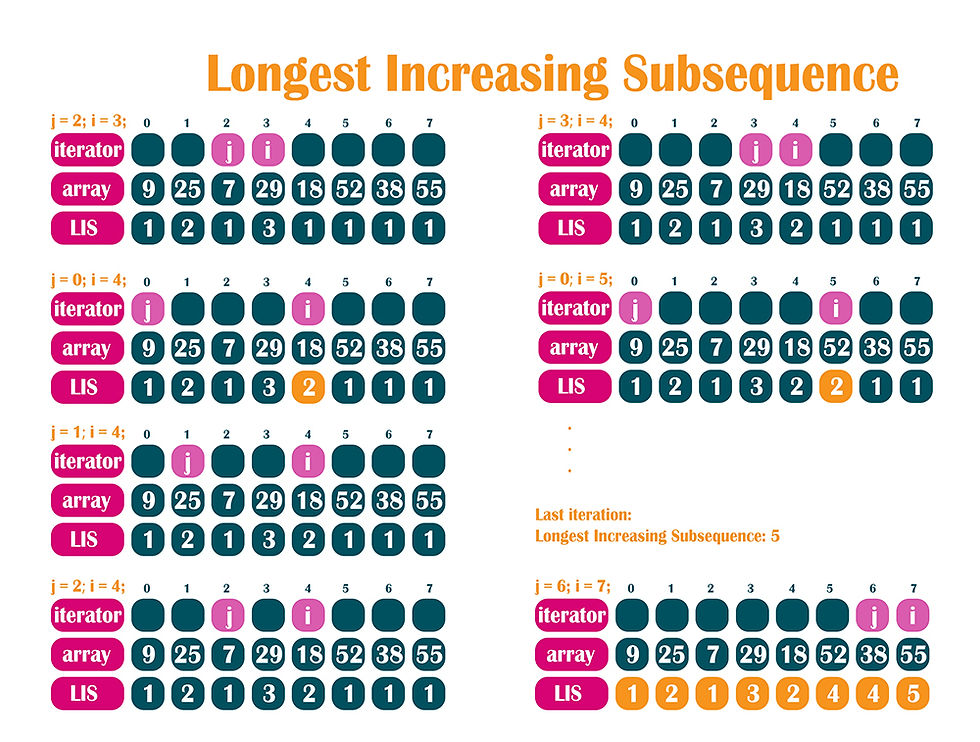Longest Increasing Sub-sequence in C++
- oanaunciuleanu

- 27 mai 2020
- 1 min de citit


Using this algorithm we can find the longest increasing subsequence from a given array. This means that we will find the numbers that are found in a sorted way, from smallest to largest, that are not necessarily adjacent. For example, from 6, 5, 9, the longest increasing subsequence is of value 2, being created by 6 and 9, or by 5 and 9.
// Longest Increasing Subsequence
#include <stdio.h>
#include <stdlib.h>
int longestIncreasingSubsequence(int arrayOfNumbers[], int numberOfElements)
{
int *lis;
int maxLength = 0;
lis = (int*)malloc(sizeof(int) * numberOfElements);
for (int i = 0; i < numberOfElements; i++)
{
lis[i] = 1;
}
for (int i = 1; i < numberOfElements; i++)
{
for (int j = 0; j < i; j++)
{
if (arrayOfNumbers[i] > arrayOfNumbers[j] && lis[i] < lis[j] + 1)
{
lis[i] = lis[j] + 1;
}
}
}
for (int i = 0; i < numberOfElements; i++)
{
if (maxLength < lis[i])
{
maxLength = lis[i];
}
}
free(lis);
return maxLength;
}
int main()
{
int arrayOfNumbers[] = { 9, 25, 7, 29, 18, 52, 38, 55 };
int numberOfElements = sizeof(arrayOfNumbers) / sizeof(arrayOfNumbers[0]);
int laxLength = longestIncreasingSubsequence(arrayOfNumbers, numberOfElements);
printf("The length of the longest increasing subsequence is %d.", laxLength);
return 0;
}The length of the longest increasing subsequence is 5.
Comentarii